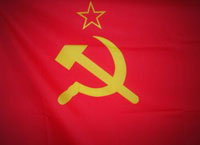Stalin’s socialist camp in Eastern Europe saved the world from Third World War
Russia marks another anniversary since Stalin’s death on March 5. Stalin turned a number of European countries into the countries of the socialist camp, which became one of the cornerstones of his foreign policy. The measure was vital for the USSR during those years, although it seriously affected Russia’s current relations with those countries.

Communists came to power in practically all countries of Central Europe from 1945 to 1949. It was a consequence of the Red Army’s victory in the Great Patriotic War. Stalin fully used the presence of Soviet troops and security agents in the adjoining states and helped loyal politicians rise to power there. The West tried to protest against such a development of the situation, although to no avail. As a result, Hungary, East Germany, Poland and Czechoslovakia became socialist countries.
Hardly had the communists came to power in Eastern Europe, when socialist changes began to take place. Private property was confiscated, collectivization was conducted in local villages. The conditions in the above-mentioned countries differed from those in the USSR, but the leaders of the new socialist countries were following all instructions from the Kremlin.
Was there a possibility for Stalin not to create the socialist cordon on the Western borders? Not likely. The Cold War began in 1946, the USA was nurturing plans to strike a nuclear blow on the Soviet Union. If Stalin had weakened his grip and withdrawn troops from Eastern Europe, the USA and Britain would have established their military presence there immediately. Hostile armies would have neared the Soviet borders again. Therefore, the decision to build the post-war socialist camp saved the world from another world war.
When Poland and the Czech Republic complain of the totalitarian regime today, they forget that they had obtained their present-day borders with Joseph Stalin’s help. Poland lost the western regions of Ukraine and Belarus, but the nation received a wide exit to the Baltic Sea.
Stalin’s politics in former socialist countries affected Russia’s future relations with the region. Hungary and Poland were known for their highly productive farms that provided the lion’s share of the countries’ GDP. The collective farms, which replaced private farms after the establishment of the communist regime there, were much less efficient. Czechoslovakia and the German Democratic Republic had highly developed private-owned industries. The two countries began to make outdated products under the socialist regime, which considerably slowed down the development of the two nations.
To crown it all, the citizens of all those countries could not make up with the idea that their leaders were fulfilling Stalin’s will. The monuments to the Soviet leader were quite annoying too. Millions of people were deprived of their private property and no one was ever going to reimburse with them. The gap between the living standard of Eastern Europe and the rest of the continent was growing. The Poles, the Hungarians, the Czechs and the Germans were blaming the USSR for that. Socialism did not enjoy the support of the masses in those countries: the bloody riots in Hungary in 1956, in Czechoslovakia in 1968 and in Poland in 1956, 1970 and 1981 could only prove it.
Soviet Union’s weakening influence resulted in the collapse of the socialist regime in Eastern Europe. The results of Stalin’s politics in Europe are rather contradictory. On the one hand, he managed to secure the western borders of the USSR for decads. On the other hand, his tough measures pushed all of those countries away from Russia.
Vadim Trukhachev
Subscribe to Pravda.Ru Telegram channel, Facebook, RSS!




